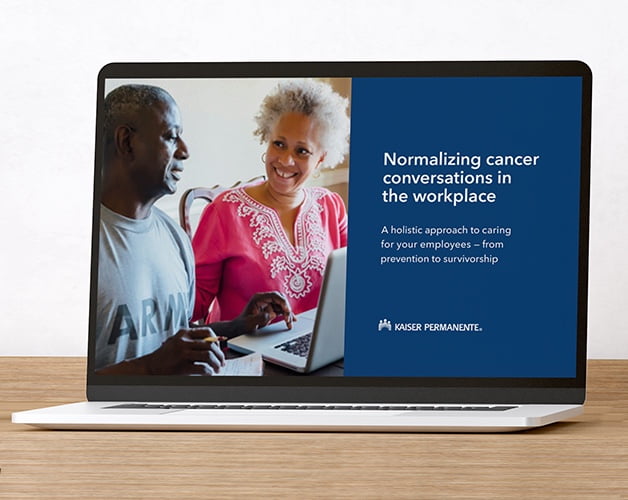In the United States, 1 in 2 men and 1 in 3 women will get cancer during their lifetime.1 Fortunately, today’s treatments are better than ever, and more people with cancer survive and live longer. The nation’s population of cancer survivors now exceeds 18 million — and a third of them are working age.2
But people who want to work while dealing with cancer can experience a negative impact on their employment and income.3 When your business has an employee with cancer or returning to work after cancer treatment, you can support their changing needs at work so they can prioritize their health while maintaining their financial stability.
Tips for supporting an employee throughout their cancer care journey
People with cancer can face a great financial burden if they — or their caregivers —work fewer hours, stop working, or lose their health coverage. If a person’s income decreases and their medical spending increases, stress and low self-esteem can worsen their cancer symptoms, and their quality of life can diminish. In extreme cases of financial strain like bankruptcy, patients may stop treatments or medications — putting themselves at greater risk of premature death.4
Since a growing number of people with cancer need or want to work, employers are increasingly looking for ways to balance their employee’s jobs with their cancer care journey, from diagnosis to remission.











